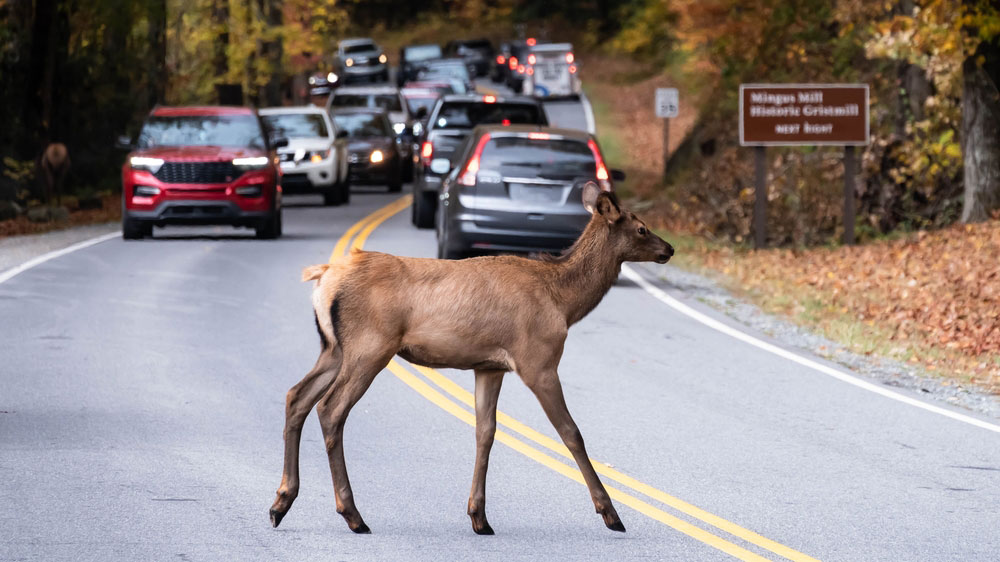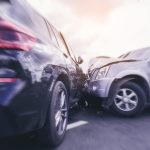Avoiding Car Accidents: Common Causes and Safety Tips for Drivers
One of the keys to safe driving is predictability. This includes driving within the speed limit, letting pedestrians cross, changing lanes with proper warning and pace, and following the general rules of the road. Unpredictability is what causes accidents. Unpredictability means you and the other cars most likely will not have enough time to act to avoid a major collision. Let us take a closer look at the following ten common causes of car accidents that stem from reckless driving, driver inattentiveness, and general unpredictability from other drivers.
Distracted Driving
Distracted driving is one of the number one causes of car accidents, even surpassing drunk driving and speeding. Distracted driving includes anything that takes your eyes and attention off the road including phone calls, texting, changing songs, looking at passengers, or even getting something from your bag. While many people think they can multitask, it is always better to be safe than sorry by keeping your eyes on the road, hands on the wheel, and paying attention to your surroundings.
DUI
Any individual who drinks or uses any type of substance and drives not only is a danger to themselves but others around them. Alcohol and drugs drastically impair your motor skills and driving abilities while also slowing down your reaction times and decision-making capabilities. While most people feel overconfident in their driving abilities after drinking or substance use, it is important to have a plan for a designated driver or opt for a ride-share service.
Speeding
Speed limit signs have a purpose and are meant to inform you of the safest travel speed on that road while taking into consideration the usual traffic, sharp turns, uneven roads, and a variety of other factors. Often drivers will drive above the speed limit but with the increase in speed, the harder it will be to react and stop for the unexpected.
other factors. Often drivers will drive above the speed limit but with the increase in speed, the harder it will be to react and stop for the unexpected.
Inclement Weather
Rain, snow, and other harsh weather can create hazardous conditions for drivers. Water and ice make roads slippery and due to the lack of friction, your hard is harder to control. Active falling rain, snow, and hail often are associated with fog which will affect visibility and reaction times.
Rear-End Collisions
Another common type of accident, rear-end collision is when the front bumper of a vehicle collides with the read end of another and can be due to a variety of factors:
- Intoxication
- Road defects
- Adverse weather
- Following too close
- Fast stops from the front car
The most common reasons are negligence and driver inattention. Typically to prove negligence, you must prove that the driver did not exercise care when handling their vehicle.
Night Driving
Driving at night is not an issue for some people but it is proven to double your chances of an accident. Drivers have low visibility at night, especially in areas without proper lighting or a lack of traffic on the road. In poorly lit areas, it is harder to see and anticipate anything ahead of you including other cars, pedestrians, or even animals.
Another risk of night driving is drowsiness. Late-night drowsy driving can lead to falling asleep at the wheel or the inability to pay attention while driving.
Reckless Driving
Reckless driving can cause severe accidents and often stems from inpatient drivers. There are several examples of reckless driving including:
- Weaving in and out of traffic
- Tailgating
- Unexpectedly cutting other drivers off
- Making improper turns
- Running stop signs/lights
- Wrong-way driving
- Street racing
- Aggressive driving
- Not obeying traffic signs
- Abrupt maneuvers
It is important to be careful when driving a vehicle, if you are driving near a reckless driver, keep your distance from them if possible and pay extra attention to the road.
Design Defects
Unfortunately, no product performs perfectly 100% of the time. This includes cars so it is important to continuously check for recalls on your vehicle and take your car in for regular preventive maintenance. If you notice issues in your car, take it in as soon as possible to ensure it is safe for the road.

Animal Crossings
Animals are not aware of the rules of the road and will unexpectedly cross causing driver panic and potentially serious damage to the vehicle. Wildlife-vehicle collisions are common, especially in the countryside or large wood areas, and there are anywhere from 725,000 to 1.5 million collisions and 200 human fatalities in the United States yearly. Besides the actual animal, distracted driving, overreaction, and visual impairment play a role in these types of accidents.
Road Hazards
Roads realistically should remain clear of debris, potholes should be fixed, proper warnings of known hazards or construction sites, and other substantial hazards should be immediately addressed to ensure road safety. This, sadly, does not always happen. Some of the most common man-made road hazards included:
- Potholes
- Raised obstructions
- Crumbling road shoulders
- Road surface changes
- Lack of lane markings
- Slick surfaces from spills
- Sharp turns or inclines
- Visual obstructions
Other hazards could be other vehicles such as wide or extra-long cargo loads on semi-trucks or fallen trees. These hazards could cause cars to lose control or end up in severe accidents without adequate warnings and failure to maintain or repair roads.
Staying Safe Behind the Wheel
Staying safe while behind the wheel is one of the most important parts of driving and despite new advances in vehicle technology, such as backup cameras, adaptive headlights, and forward collision systems (FCS), car accidents still regularly happen. While not all accidents are preventable there are a few tips for staying safe on the road including:
-
-
-
-
- Keeping your car’s lights on when driving at dusk, dawn, and during the rainy season.
- Check your car regularly and keep it in good working condition.
- Monitor tires, brakes, lights, and mirrors.
- Understand your car’s limitations.
- If you are a newer driver, utilize as much supervised driving time as needed.
- ALWAYS wear your seatbelt.
- Limit passengers and night driving (if possible).
- Train for poor weather conditions or heavily trafficked roads.
- Avoiding these conditions will never give you the experience you need to drive confidently and safely through them, start slow but do not avoid it.
- Always be conscious of your surroundings like other vehicles or any potential hazards.
- Be extra attentive if you are around a reckless driver or on any unsafe road.
-
- Drive defensively, not aggressively.
- Do not react to aggressive drivers.
- Make every attempt to move out of their way.
- Do not challenge them.
- Avoid eye contact and ignore hand gestures.
- Report on aggressive drivers.
- Share the road with pedestrians, bikers, and motorcycles.
- Know your car.
- Make sense of the signals of the dashboard.
- Know your car’s smell.
- Burnt carpet? Check if your handbrake has been left on, or if the brake pads are overheated.
- Hot oil? Look out for overflow from a recent oil change.
- Rotten eggs? The catalytic converter may be faulty, which could be affecting your car’s engine.
- Practice Safety Daily
- You are the first line of defense for safe driving but ensure you stay aware of your surroundings, know what to do if your car breaks down, follow road signs, and speed limit postings, and constantly stay alert.
If you or a loved one has been affected by a crash, contact us at the Law Offices of Bram J. Gechtman. We understand how devastating and inconvenient auto accidents can be. Our team of experienced attorneys can help get you the compensation you deserve to help cover damage, medical bills, pain and suffering, and loss of wages.
-
-
-




